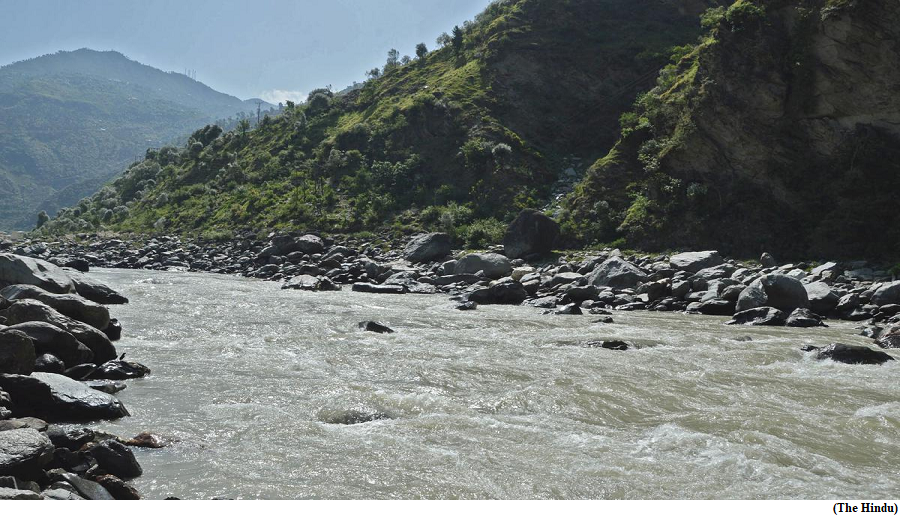India is set to achieve 150 billion dollar Bio-Economy by 2025 (GS Paper 3, Economy)

Why in news?
- Recently, the Union Minister of Science & Technology said, India is set to achieve $150 billion Bio-Economy by 2025, which stood at over $100 billion in 2022.
- He was speaking, while overseeing the signing up of the ‘Implementation Arrangement’ between the Department of Biotechnology (DBT) and the United States-National Science Foundation (US-NSF) in New Delhi.
India’s position:
- India has a 3-5% market share in the global biotechnology industry and it ranks 12th in the world in biotech and 3rd in Asia-pacific.
- India has the 3rd largest Startups ecosystem globally; and the largest vaccine manufacturer.
- India’s ranking in global science and technology indices continues to rise and India has been ranked 40th among the innovative economies as per Global Innovation Index, 2022.
About Department of Biotechnology (DBT):
- The Department of Biotechnology (DBT) creates and nurtures strong foundation in biotechnology innovation, research and development across segments such as bio-pharma, bio-services, agri-biotech, industrial biotech, and bioinformatics.
About US-NSF:
- The U.S. National Science Foundation (US-NSF) is an independent federal agency that supports science and engineering in the United States.
- It was established to promote the progress of science, advance the national health, prosperity and welfare, and secure national defence, through administering grants.
Causing floods is a terrorist offence in law proposed to replace the Indian Penal Code
(GS Paper 3, Governance)
Why in news?
- The proposed Bharatiya Nyaya Sanhita Bill (BNS) says that causing “floods” is a terrorist offence.

Details:
- The Bill that seeks to replace the British-era Indian Penal Code defines terrorism as a separate offence for the first time as part of a general law. The Unlawful Activities (Prevention) Act, 1967 is a special law focused on terrorist activities.
- Section 111 (6) (a) of the Bill says that a “terrorist” refers to any person who “develops, manufactures, possesses, acquires, transports, supplies or uses weapons, explosives, or releases nuclear, radiological or other dangerous substance, or cause fire, floods or explosions.”
- The Bill has been referred to a Parliamentary Committee on Home Affairs for examination.
Concerns:
- The section on terrorism and organised crimes in the proposed law lacks procedural safeguards against false implication as available under the UAPA and the Maharashtra Control of Organised Crime Act (MCOCA).
- The UAPA has often been criticised for draconian provisions. Under the anti-terror law, 4,690 persons were arrested between 2018 and 2020, but only 3% were convicted. Its constitutional validity has been challenged in the Supreme Court.
Penalty:
- Section 111 proposes a minimum five-year imprisonment and the death sentence as maximum punishment for a terrorist offence.
Safeguard provision under MCOCA & UAPA:
- Under the MCOCA and the UAPA, there is a provision that before filing of FIR there has to be an approval by a senior police officer.
- Secondly, the investigation can only be carried out by an officer of a particular rank and there is a bar on the court to take cognisance of the case without government sanctions.
- If these safeguards are not there, the trial cannot proceed. Such safeguards are missing in the proposed law.
Exercise Malabar concludes
(GS Paper 3, Defence)
Why in news?
- Recently, the 27th edition of Exercise Malabar concluded on the east coast of Australia, off Sydney.
- The four-nation exercise witnessed the participation of ships, submarines, and aircraft from the Indian Navy, Royal Australian Navy (RAN), Japan Maritime Self Defence Force (JMSDF), and the US Navy (USN).

Two phases:
- The exercise was conducted in two phases – a harbour (or planning) phase from August 11 to 15, and a sea phase from August 16 to 21, which saw the four navies actually implementing the plans that they had made.
Key Highlights:
- The Indian Navy was represented by the indigenously built guided missile destroyer, INS Kolkata, the multi-role stealth frigate INS Sahyadri, and P-8I Poseidon maritime patrol aircraft.
- The sea phase of Exercise Malabar witnessed complex and high intensity exercises in air, surface and undersea domains, weapon firings and cross deck helicopter operations.
- Exercise Malabar reaffirmed the ability of the four navies to operate together as an integrated force, while also highlighting their shared commitment to maritime security and regional stability through collaborative training and mutual understanding.
China factor:
- China has made it clear to the four participating countries that it sees Malabar as an inimical military grouping.
- After Malabar 2007, China conveyed its displeasure in writing, seeking to know whom the exercise was directed against. Since then, the number of participating navies has doubled from two to four.




